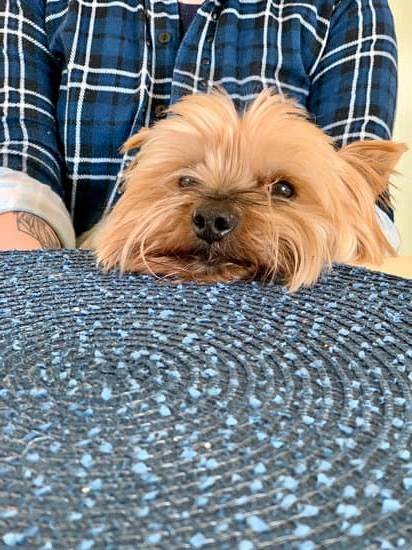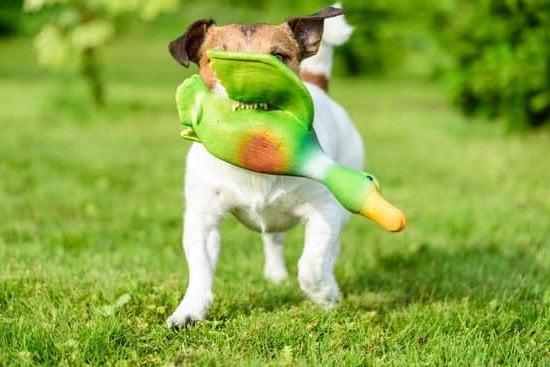Introduction
Pee pad training is a useful way to potty-train dogs indoors. This method can help keep pet owners and their four-legged friends from having to go outside in inclement weather or at odd hours of the night. With consistency, patience, and reflection, puppy owners can set their pup up for success and make potty time a breeze.
In order to effectively train a dog to use a pee pad, it’s important to first understand the concept behind it. The purpose of using a pee pad is to create an easy-to-clean training area within your home as well as teach your pup that it’s okay to eliminate indoors. It’s critical for new puppy parents understand that although this may be convenient for them – its not an excuse not to give their dog enough outdoor bathroom breaks!
Once you understand the concept behind pee pads, you can then move on to create an effective plan to get started with training your pup. Here are some tips on how you can successfully train your dog:
1. Designate a specific area: Choose a spot in your home with minimal distractions where you would like your pup to go every time they need to potty such as near the door or close to the back yard patio door. It’s important that this spot remain consistent so that puppies know where they should eliminate each time they need relief.
2. Start off small: Use smaller sized pee pads initially when introducing them for the first few times and gradually increase the size as the pup gets more comfortable with using one regularly.
3. Give lots of verbal praise in response :Whenever he/she eliminates on the pee pad, always reward abundantly with verbal praise and physical affection so that puppies learn which behaviors will result in positive reinforcement from their owner(s). This helps build a relationship between you as anxiousness over correction should be avoided since punishment does not bolster trust in relationships between puppy and parent!
4. Remove used pads quickly: Removing used pee pads quickly will help reinforce positive behaviors by letting the puppy see there were no negative consequences associated with going on the pad instead of elsewhere (eg floor or carpet). This will help them best understand what behavior is expected at all times rather than giving mixed signals which only confuse puppies thus leaving them wondering why they did something wrong if given positive reinforcement right after!
The Benefits of Training a Dog to Use a Pee Pad
Training a dog to use a pee pad is an excellent way to avoid messes in the home and keep your pup from having to do their business outdoors in unfavorable weather. Training your dog to use a pee pad can also be beneficial for house-training older canines if they have had some bad past experiences with outdoor potty breaks or when you are unable to take them outside. Here are some tips to help train your pup:
1. Establish a routine: Start out by having a set routine on where and when the pup should go each day and make sure this is followed as regularly as possible.
2. Create a designated area: Place the pee pad in an area that has been cordoned off as your dog’s designated bathroom spot. This will help him understand quickly what he has to do when it’s time for business.
3. Praise and reward: Every time your pet does its business correctly, offer them lots of verbal praise, love and treats — this will give them positive reinforcement and encourage future good behavior on their part–
4. Stay consistent: Consistency is extremely important when it comes to training so do not get frustrated if you feel like there is no progress being made; instead take things one step at a time and be patient with the process — before long, your pup will have it figured out!
5. Involve other family members: By involving other family members in the training process, you can ensure consistency across the board and make sure everyone understands what is expected of them (and of your pup!)
Developing a Positive Association with the Pee Pad
One way to help train a dog to use a pee pad is by developing a positive association with the pee pad. This can be done by using rewards and praise when your dog uses the pee pad. You can also provide treats in the area where you want your dog to use the pee pad, as it will make him more inclined to go there for potty breaks. Additionally, initially placing them in the corner of the room or next to his sleeping area can give the pup an idea of what it is used for. Whenever you see your dog going to the designated spot, reward and praise him so that he knows it is good behavior!
Establishing the Dogs Routine for Pee Pad Use
Training a dog to use a pee pad requires a lot of repetition and consistency. Establishing a routine, both inside and outside the home is one of the most important steps to successfully training your pup. Initially, you should keep the times between trips to the pad consistent so that your dog begins to build an understanding when it’s expected of them. For example, taking your dog to their designated pee pad immediately after eating and playing or shortly after waking up can be helpful in creating this association. Additionally, consider taking them outside on regular occasions as well, so that they understand when they need to ask you to go out and pee versus doing it in their own designated area. Finally, make sure all other family members are consistent with the expectations you’ve set for your pet; if they fail to meet these criteria, reward them with treats or affection when they do!
Preparing the Training Environment
When it comes to training your dog to use a pee pad, making sure the environment is conducive to success is key. To do this, designate an area for the pee pad where the location will remain consistent and be easily accessible to the pup. Clear out any furniture or other items that may be in the way; they can confuse or distract your dog from understanding that the pee pad is their designated spot to go potty. Place any treats or toys nearby as these objects can be important motivators for successful potty training. In addition, make sure to keep plenty of fresh water nearby to ensure your pooch stays hydrated!
Learning the Basics of Dog Clicker Training
Dog clicker training is a method of positive reinforcement that can help train your dog to use the pee pad. Clicker training works by pairing a clicking sound with a reward like treats, toys, or verbal praise. Every time you click, you offer the reward that’s associated with the behavior you want from your pet. Before beginning clicker training, you should make sure your dog is familiar and comfortable with the clicker noise. This can be done by making the clicking sound repeatedly until your pet is used to it. After that, start associating the clicker noise with treats or something your pup loves as a reward.
When first introducing a pee pad during training, guide your pup over to it and click once they get close. Immediately after the click, offer them the treat. This reinforces their behavior for wanting to go near where you indicated – in this case, towards the pee pad – by providing them something they find rewarding right away (the treat!). Continue doing this until they start using the pee pad consistently and then gradually reduce how often you provide rewards until they no longer need one every single time they go in their designated area. Additionally, when going on walks outside always take them back to their pee pad before rewarding them so that they come to understand that both inside and outside are valid potty spots.
How to Encourage & Reward Accomplishments
One way to train a dog to use a pee pad is by encouraging and rewarding its accomplishments. Whenever the pup successfully uses the pee pad, make sure to reward it with treats or praise. This will let your dog know that it has done something right and will help reinforce the behavior. Additionally, offer positive encouragement throughout each training session by providing verbal feedback when your pup demonstrates progress. Make sure to keep training sessions short and frequent in order to prevent your pet from becoming bored with the exercise. Once your dog begins reliably going to the pad on its own, gradually reduce rewards until it stops needing them entirely. Lastly, remember that patience is key when teaching an animal such as a dog how to recognize and complete reward-worthy behaviors.
Troubleshooting Common Problems
One common issue when training a dog to use a pee pad is if they have already been accustomed to going on other surfaces like the floor or furniture. To combat this, it is best to create a designated area in the home specifically for the pee pad. Mark this area with visual cues such as rugs and pillows so that your pup can start to associate going on the pad with being in that particular spot. Additionally, reward-based training can be used by offering treats each time your pup goes on the pad – this will help encourage them to continue using it instead of other surfaces.
Another common problem that arises when training a puppy to use a pee pad is that they sometimes become distracted by ongoing activities or people in the area and forget about going on it. If this happens, try taking them away from any distractions and make sure their mind is only focused on using their pee pad. Also, it may be helpful to minimize foot traffic around their designated space since activity will cause them to become distracted more easily. Lastly, setting up an indoor barrier that blocks off access from visual distractions helps train a dog stay on task with using their potty pad.
Different Types of Dog Pee Pads and How to Choose the Right One
The type of pee pad you choose to help train your dog can have a significant impact on their success and overall potty training journey. There are several different types of Dog Pee Pads to choose from, each offering its own unique benefits and drawbacks.
Absorbent pads are the most common type of pee pad used by many pet owners. These pads are made up of layers of fluid-trapping fibers that can easily absorb liquid and lock it in so as to avoid messes around the house or yard. Most absorbent pads also come treated with an odor neutralizer so your pup’s accident won’t leave behind any nasty aromas.
Disposable pee pads are another popular choice for potty training dogs since they’re very convenient for quick cleanup. They typically feature rounded edges at the sides that make them easier to pick up and a raised top layer that helps keep any liquid inside the pad for less mess overall. They usually don’t hold very much in terms of absorption capacity, however, which means they may need to be frequently changed out depending how often your pup uses them.
Reusable grass mats offer an eco-friendly option as they offer similar functionality as traditional disposable pee pads but can be washed and reused multiple times over. They provide a realistic grass-like surface on one side and a waterproof backing on the other side, allowing your pup to associate going potty with something more natural than artificial surfaces such as plastic or paper. Additionally, these mats can be rolled up for easy storage when not in use so you won’t have to worry about taking up too much space around your home while still providing plenty of protection against accidents indoors and even in crates or carriers while travelling.
Conclusion
Training a dog to use a pee pad can be difficult, but it’s definitely possible! Here’s a summary of the tips you should follow when training your pup:
• Start young. Puppies are naturally more open to learning and may find using a pee pad less intimidating than an adult dog.
• Establish a routine for your pup – keep them on schedule with regular walks and feedings so that they know when to expect potty time.
• Place the pee pad where it will be easy for your pup to see and access – not too far away from their bed or favorite spot!
• Always reward the positive behavior whenever your dog goes on the pee pad, using verbal praise and treats.
• Monitor your pup closely during potty training and invest in odor pads for accidents; this helps teach your pup that eliminating indoors is unacceptable.
• Be patient and consistent, as mastering this skill can take some time. Don’t get frustrated if there are setbacks—just try again tomorrow!

Welcome to the blog! I am a professional dog trainer and have been working with dogs for many years. In this blog, I will be discussing various topics related to dog training, including tips, tricks, and advice. I hope you find this information helpful and informative. Thanks for reading!





